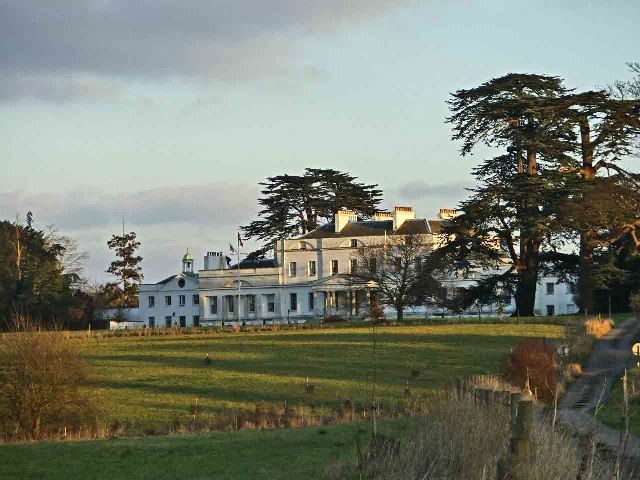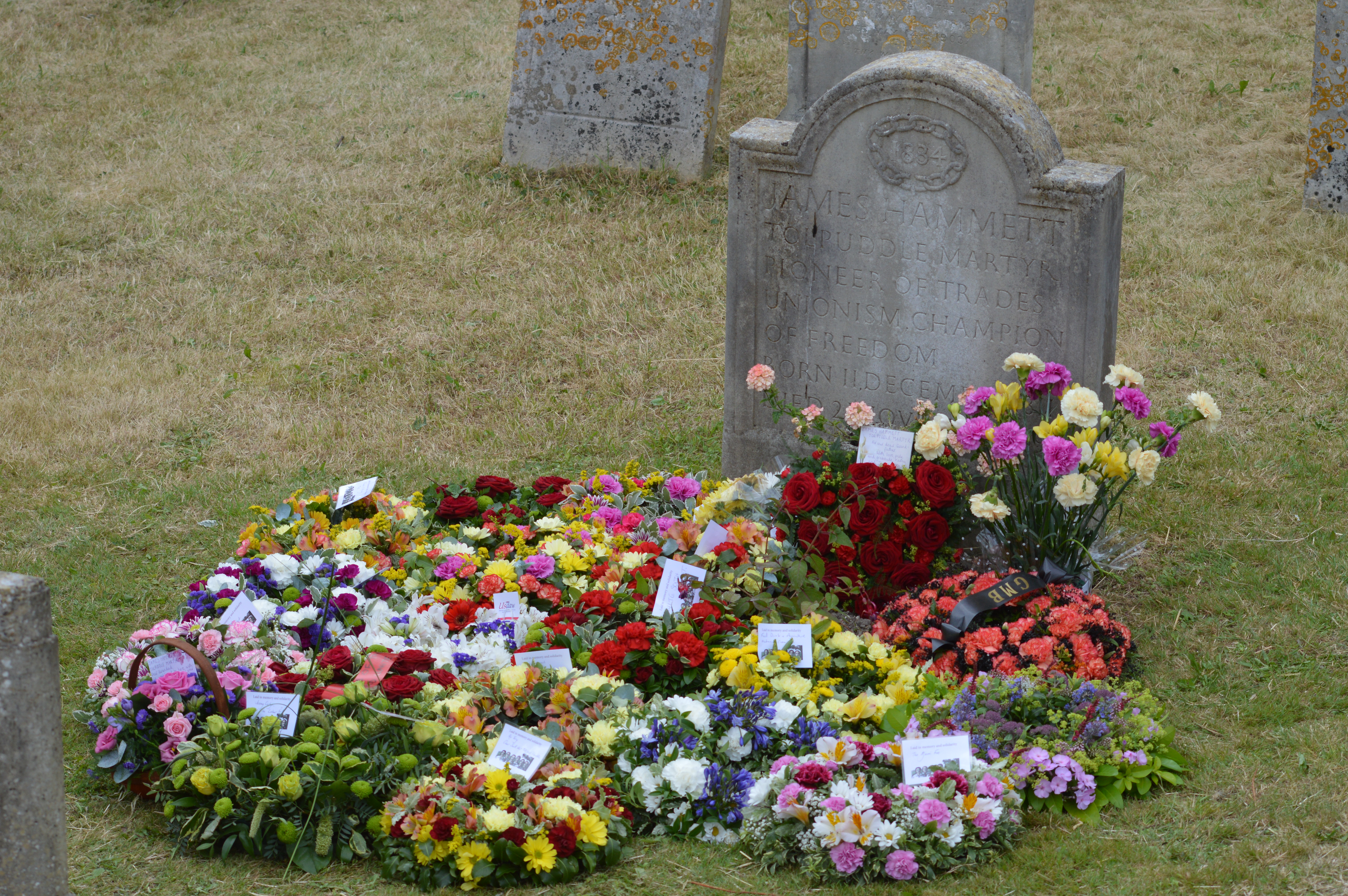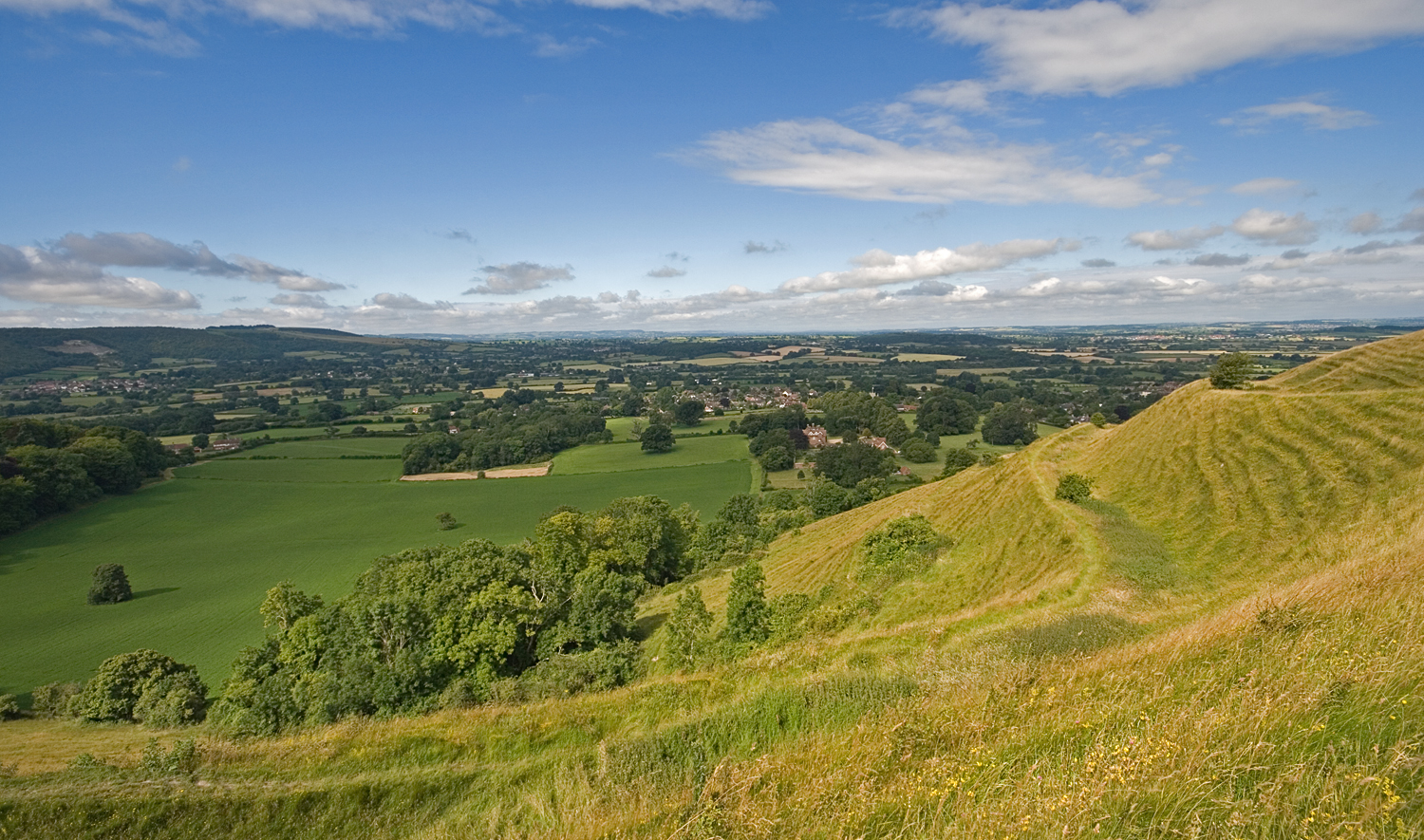|
Henry Walter (antiquary)
Henry Walter (1785–1859) was an English cleric and antiquary. Early life Born at Louth, Lincolnshire on 28 January 1785, he was the eldest son of James Walter, master of Louth grammar school and later rector of Market Rasen. The Walter family was connected to the Austens: James Walter's father William-Hampson Walter was step-brother to George Austen, father of Jane Austen. Henry Walter was admitted to St John's College, Cambridge, on 1 March 1802, and graduated B.A. in 1806, classed as second wrangler in the Mathematical Tripos, behind Frederick Pollock. He was also junior Smith's prizeman. He was elected fellow and tutor of his college, retaining his fellowship until his marriage in 1824; commenced M. A. in 1809; and proceeded to the degree of B.D. in 1816. In 1810 Walter visited Hawkstone Park, and much later (1852) published an account of the celebrated "hermit of Hawkstone". This revealed that a paid poor man, who acted the part, had at some point been replaced by a st ... [...More Info...] [...Related Items...] OR: [Wikipedia] [Google] [Baidu] |
Louth, Lincolnshire
Louth () is a market town and civil parish in the East Lindsey district of Lincolnshire, England.OS Explorer map 283:Louth and Mablethorpe: (1:25 000): Louth serves as an important town for a large rural area of eastern Lincolnshire. Visitor attractions include St James' Church, Hubbard's Hills, the market, many independent retailers, and Lincolnshire's last remaining cattle market. Geography Louth is at the foot of the Lincolnshire Wolds where they meet the Lincolnshire Marsh. It developed where the ancient trackway along the Wolds, known as the Barton Street, crossed the River Lud. The town is east of a gorge carved into the Wolds that forms the Hubbard's Hills. This area was formed from a glacial overspill channel in the last glacial period. The River Lud meanders through the gorge before entering the town. To the direct south east of Louth is the village of Legbourne, to the north east is the village of Keddington, to the north west is the village of South Elking ... [...More Info...] [...Related Items...] OR: [Wikipedia] [Google] [Baidu] |
Allotment (gardening)
An allotment (British English), or in North America, a community garden, is a plot of land made available for individual, non-commercial gardening or growing food plants, so forming a kitchen garden away from the residence of the user. Such plots are formed by subdividing a piece of land into a few or up to several hundred parcels that are assigned to individuals or families. Such parcels are cultivated individually, contrary to other community garden types where the entire area is tended collectively by a group of people. In countries that do not use the term "allotment (garden)", a "community garden" may refer to individual small garden plots as well as to a single, large piece of land gardened collectively by a group of people. The term "victory garden" is also still sometimes used, especially when a community garden dates back to the First or Second World War. The individual size of a parcel typically suits the needs of a family, and often the plots include a shed for tools a ... [...More Info...] [...Related Items...] OR: [Wikipedia] [Google] [Baidu] |
Bayfordbury
Bayfordbury, Hertfordshire, is a large Grade II* listed country house with surrounding parkland, and the location of a University of Hertfordshire campus, housing its biology/geography field station and observatory. History of Bayfordbury Bayfordbury House was originally built between 1759 and 1762 for well-to-do London merchant Sir William Baker. It was upgraded to its present appearance by his son, also William Baker between 1809 and 1812. After the death of Admiral Sir Lewis Clinton-Baker in 1940, the estate was leased to the Dr Barnardo's charity. The 372-acre Bayfordbury estate was then bought by the John Innes Centre in 1948 and developed into a School of Cytology. A new Cell Biology building was built in 1959, later to become the Science Learning Centre. In 1967 the John Innes Centre moved to its present site in Norwich and the Bayfordbury estate was bought by the Hertfordshire Council in 1967 for the use of Hatfield Polytechnic. Bayfordbury Observatory In 1969 the ... [...More Info...] [...Related Items...] OR: [Wikipedia] [Google] [Baidu] |
William Baker (1743–1824)
William Baker (3 October 1743 – 20 January 1824) was a British politician. Life William Baker was the eldest son of Sir William Baker, MP, educated at Eton College (1753–60). Admitted to Clare College, Cambridge in 1761, he did not matriculate there. He studied law at the Inner Temple (1761), where he was called to the bar in 1775. He succeeded his father in 1770, inheriting and renovating the Bayfordbury country house in Hertfordshire. He was elected a Sheriff of London for the same year. Baker was the Member of Parliament for Aldborough 4 March 1777 – 8 September 1780, Hertford 7 September 1780 – 30 March 1784, Hertfordshire 23 June 1790 – 10 July 1802 and 11 February 1805 – 11 May 1807 and Plympton Erle 22 March 1768 – 10 October 1774. He died at the age of 80. He had married twice: firstly with Juliana, the daughter of Thomas Penn of Stoke Park, Buckinghamshire and the granddaughter of William Penn, Governor of Pennsylvania, with whom he had a daughter; and ... [...More Info...] [...Related Items...] OR: [Wikipedia] [Google] [Baidu] |
Edward Pusey
Edward Bouverie Pusey (; 22 August 180016 September 1882) was an English Anglican cleric, for more than fifty years Regius Professor of Hebrew at the University of Oxford. He was one of the leading figures in the Oxford Movement. Early years He was born at Pusey House in the village of Pusey in Berkshire (today a part of Oxfordshire). His father, Philip Bouverie-Pusey, who was born Philip Bouverie and died in 1828, was a younger son of Jacob des Bouverie, 1st Viscount Folkestone; he adopted the name of ''Pusey'' on succeeding to the manorial estates there. His mother, Lady Lucy Pusey, the only daughter of Robert Sherard, 4th Earl of Harborough, was the widow of Sir Thomas Cave, 7th Baronet, MP before her marriage to his father in 1798. Among his siblings was older brother Philip Pusey and sister Charlotte married Richard Lynch Cotton. Pusey attended the preparatory school of the Rev. Richard Roberts in Mitcham. He then attended Eton College, where he was taught by Thomas Cart ... [...More Info...] [...Related Items...] OR: [Wikipedia] [Google] [Baidu] |
John Clavell Mansel-Pleydell
John Clavell Mansel-Pleydell (1817–1902), originally John Clavell Mansel, was a Dorset antiquary, known for contributions to geology, botany, and ornithology. Life Born at Bramshaw, Dorset, on 4 December 1817, he was eldest son of twin boys (brother George was the younger twin) of Colonel John Mansel (1776–1863) of Smedmore, Dorset by his wife Louisa, fourth daughter of Edmund Morton Pleydell of Whatcombe, Dorset. Educated privately, with Henry Walter as a tutor, he entered St. John's College, Cambridge in 1836, and graduated B.A. in 1839. Mansell was admitted a student of Lincoln's Inn on 2 May 1840, but was not called to the bar. For thirty years he was an officer in the Queen's Own Dorset Yeomanry. He was promoted from lieutenant to captain on 26 July 1856. He was one of the promoters of the Somerset and Dorset Railway, and suffered financial losses. In 1856 Mansel built at his own expense the Milborne Reformatory, which was converted in 1882 into an industrial school. In ... [...More Info...] [...Related Items...] OR: [Wikipedia] [Google] [Baidu] |
Tolpuddle Martyrs
The Tolpuddle Martyrs were six agricultural labourers from the village of Tolpuddle in Dorset, England, who, in 1834, were convicted of swearing a secret oath as members of the Friendly Society of Agricultural Labourers. They were arrested on charges under an obscure act during a labour dispute against cutting wages before being convicted in ''R v Lovelass, R v Loveless and Others'' and sentenced to penal transportation to Australia. They were pardoned in 1836 after mass protests by sympathisers and support from John Russell, 1st Earl Russell, Lord John Russell and returned to England between 1837 and 1839. The Tolpuddle Martyrs became a popular cause for the early Trade union, union and workers' rights movements. Historical events Background In 1799 and 1800, the Combination Acts in the Kingdom of Great Britain had outlawed "combining" or organising to gain better working conditions, passed by Parliament of the United Kingdom, Parliament because of a political scare followin ... [...More Info...] [...Related Items...] OR: [Wikipedia] [Google] [Baidu] |
Speenhamland System
The Speenhamland system was a form of outdoor relief intended to mitigate rural poverty in England and Wales at the end of the 18th century and during the early 19th century. The law was an amendment to the Elizabethan Poor Law. It was created as an indirect result of Britain's involvements in the French Revolutionary and Napoleonic Wars (1793–1815). Operation The system was named after a 1795 meeting in Speenhamland, Berkshire, where local magistrates devised the system as a means to alleviate the distress caused by high grain prices. The increase in the price of grain may have occurred as a result of a poor harvest in the years 1795–96, though at the time this was subject to great debate. Many blamed middlemen and hoarders as the ultimate architects of the shortage. The Speehamland scale read, "When a gallon loaf of bread cost one shilling:... every Poor and Industrious Man should have for his own Support 3s weekly, either produced by his Family's Labour, or an Allowance f ... [...More Info...] [...Related Items...] OR: [Wikipedia] [Google] [Baidu] |
Magistrate
The term magistrate is used in a variety of systems of governments and laws to refer to a civilian officer who administers the law. In ancient Rome, a '' magistratus'' was one of the highest ranking government officers, and possessed both judicial and executive powers. In other parts of the world, such as China, a magistrate was responsible for administration over a particular geographic area. Today, in some jurisdictions, a magistrate is a judicial officer who hears cases in a lower court, and typically deals with more minor or preliminary matters. In other jurisdictions (e.g., England and Wales), magistrates are typically trained volunteers appointed to deal with criminal and civil matters in their local areas. Original meaning In ancient Rome, the word '' magistratus'' referred to one of the highest offices of state. Analogous offices in the local authorities, such as ''municipium'', were subordinate only to the legislature of which they generally were members, '' ex officio'' ... [...More Info...] [...Related Items...] OR: [Wikipedia] [Google] [Baidu] |
Poor Law
In English and British history, poor relief refers to government and ecclesiastical action to relieve poverty. Over the centuries, various authorities have needed to decide whose poverty deserves relief and also who should bear the cost of helping the poor. Alongside ever-changing attitudes towards poverty, many methods have been attempted to answer these questions. Since the early 16th century legislation on poverty enacted by the English Parliament, poor relief has developed from being little more than a systematic means of punishment into a complex system of government-funded support and protection, especially following the creation in the 1940s of the welfare state. Tudor era In the late 15th century, parliament took action on the growing problem of poverty, focusing on punishing people for being "vagabonds" and for begging. In 1495, during the reign of King Henry VII, Parliament enacted the Vagabond Act. This provided for officers of the law to arrest and hold "all such ... [...More Info...] [...Related Items...] OR: [Wikipedia] [Google] [Baidu] |
More Crichel
Moor Crichel () is a village and former civil parish, now in the parish of Crichel, in East Dorset, England situated on Cranborne Chase five miles east of Blandford Forum. The civil parish includes the hamlet of Manswood notable for a terrace of twelve thatched cottages. Dorset County Council's 2013 estimate of the parish population is 140. In the 2001 census the parish had a population of 180. In the 2011 census the population of Moor Crichel parish combined with the neighbouring parish of Long Crichel was 246 (figures have not been released for Moor Crichel separately). The civil parish was abolished on 1 April 2015 and merged with Long Crichel to form Crichel. History At first, Moor Crichel was made up of two original settlements with different pieces of land attached to them. These two settlements were Little Crichel towards the northwest of the parish where the village was close to Norwood Park; and Moor Crichel (More Crichel) in the southeast of the parish which was clo ... [...More Info...] [...Related Items...] OR: [Wikipedia] [Google] [Baidu] |
Vale Of Blackmoor
The Blackmore Vale (; less commonly spelt ''Blackmoor'') is a vale, or wide valley, in north Dorset, and to a lesser extent south Somerset and southwest Wiltshire in southern England. Geography The vale is part of the Stour valley, part of the Dorset AONB and part of the natural region known as the Blackmoor Vale and Vale of Wardour. To the south and east, the vale is clearly delimited by the steep escarpments of two areas of higher chalk downland, the Dorset Downs to the south, and Cranborne Chase to the east. To the north and west, the definitions of the vale are more ambiguous, as the landscape changes more gradually around the upper reaches of the Stour and its tributaries. One definition places the boundary along the watershed between the Stour and neighbouring valleys of the Yeo to the west and Brue to the north. A narrower definition places the limits of the vale close to the county boundary and villages like Bourton, where the landscape transitions to hillier greensa ... [...More Info...] [...Related Items...] OR: [Wikipedia] [Google] [Baidu] |






